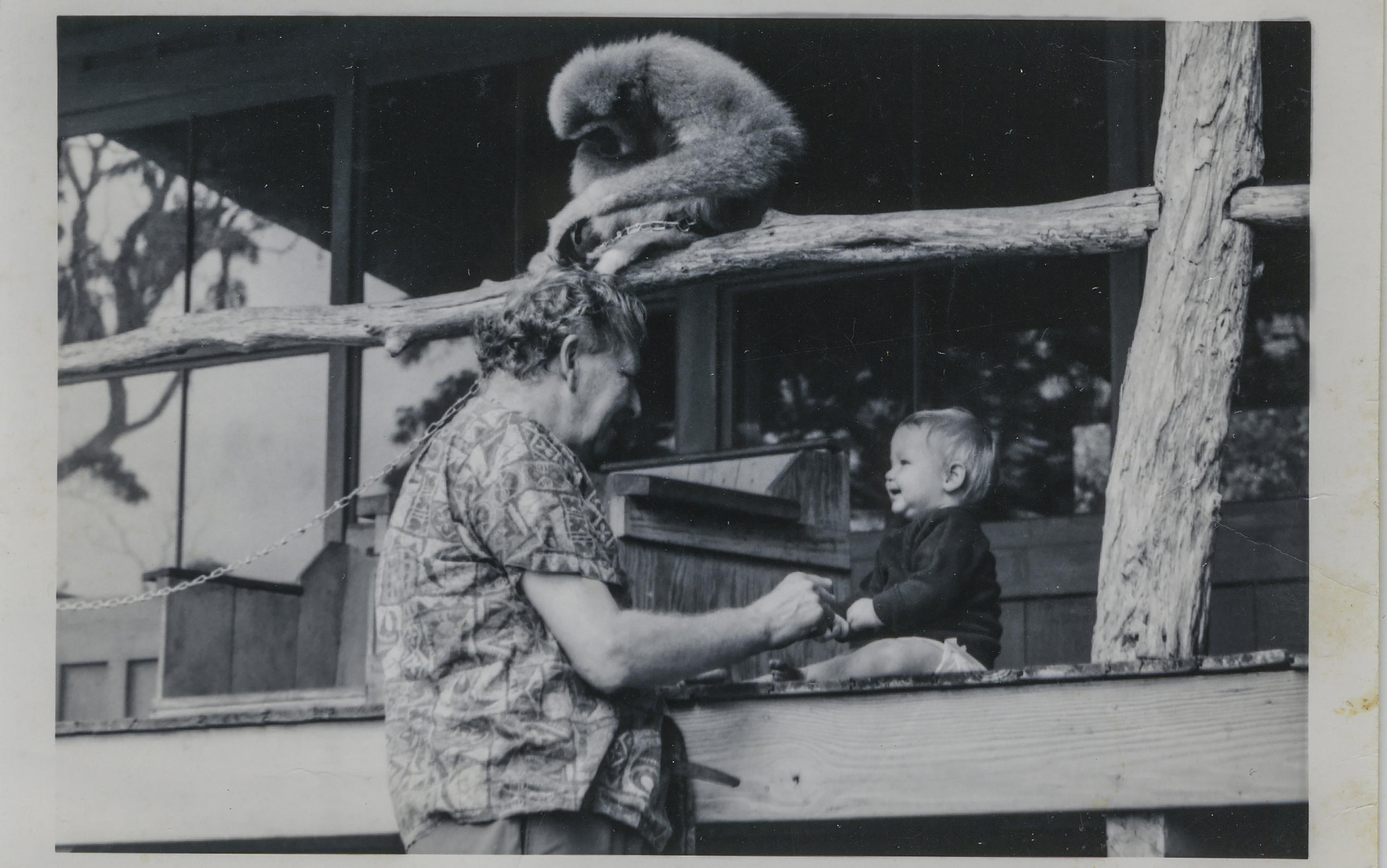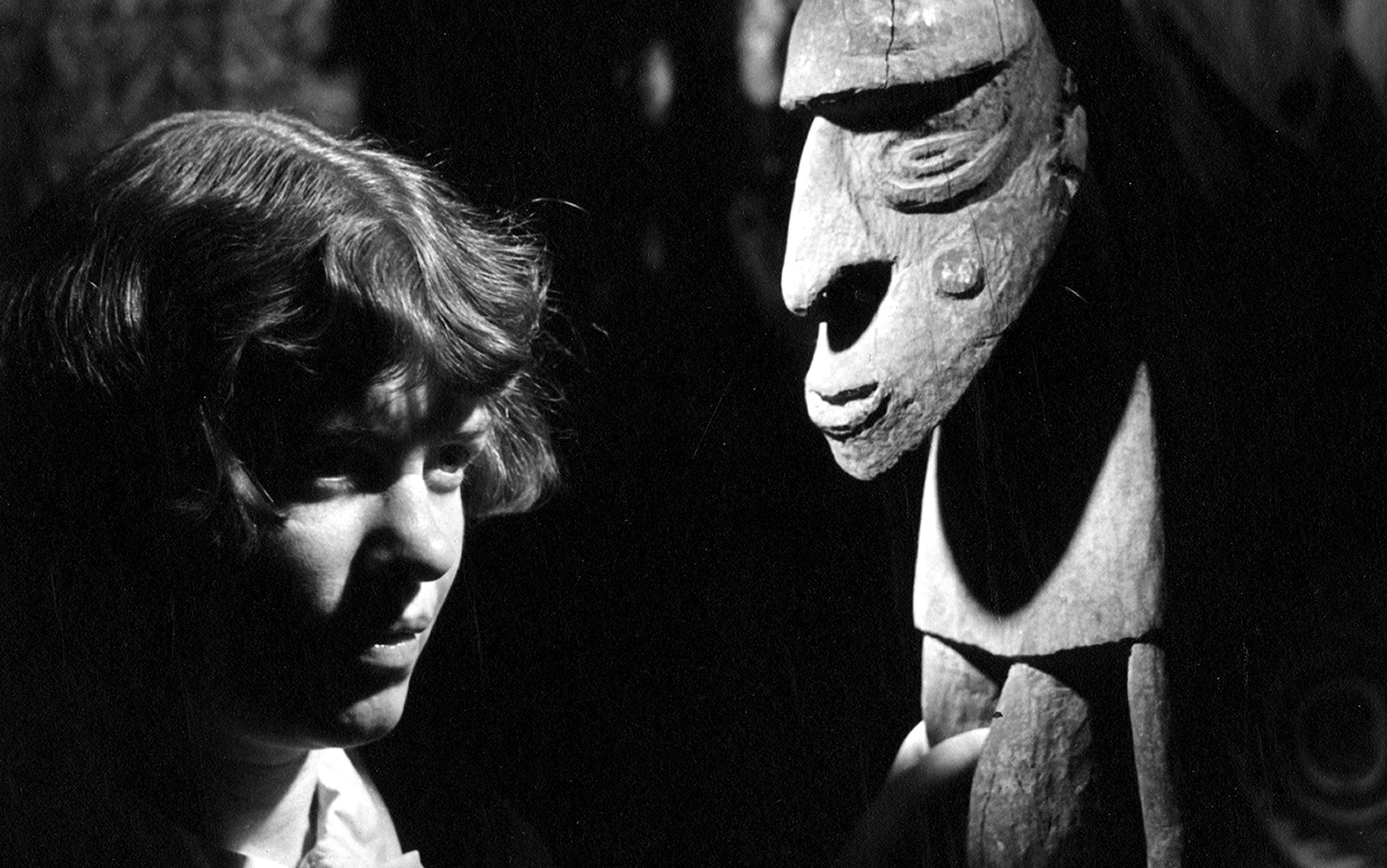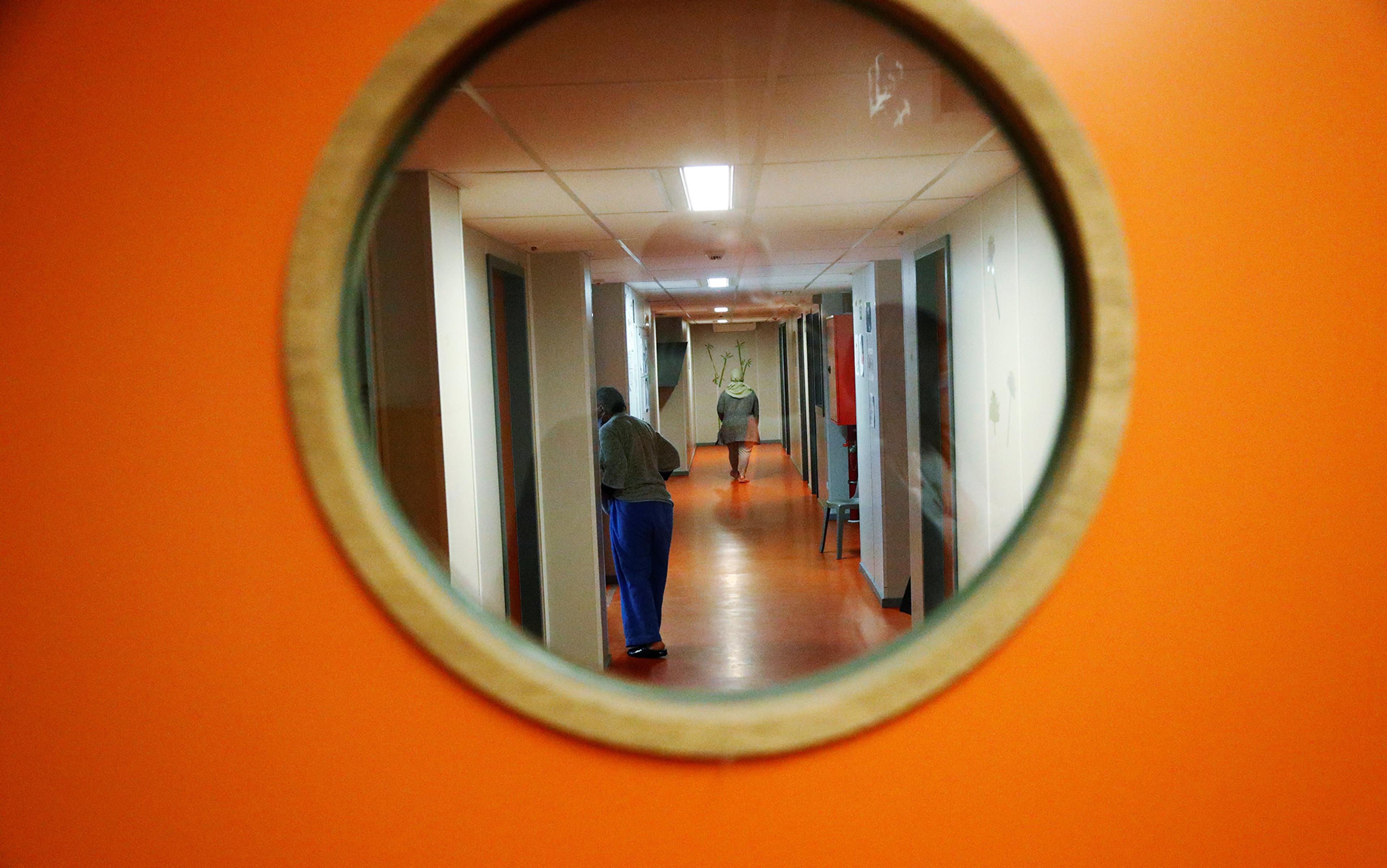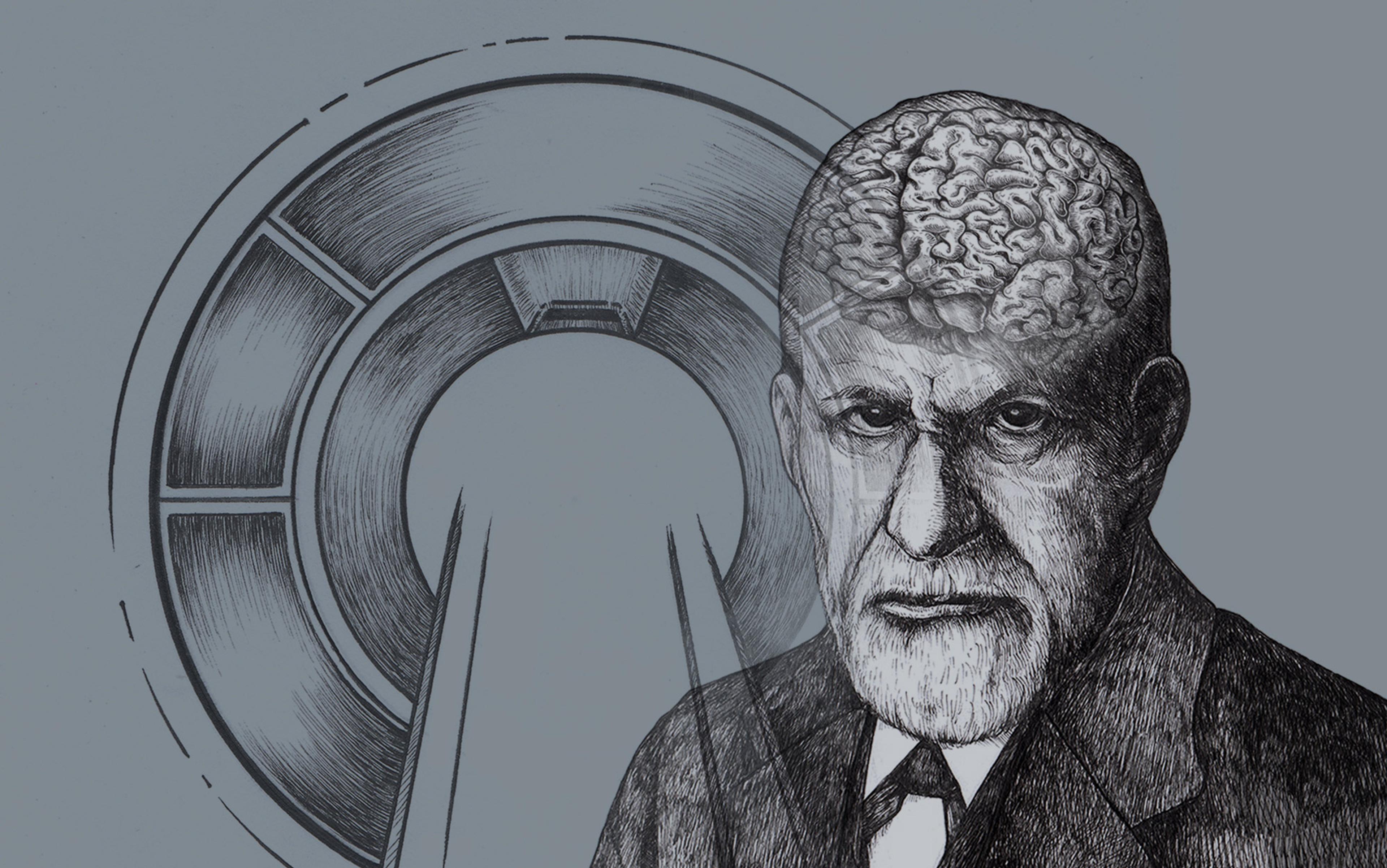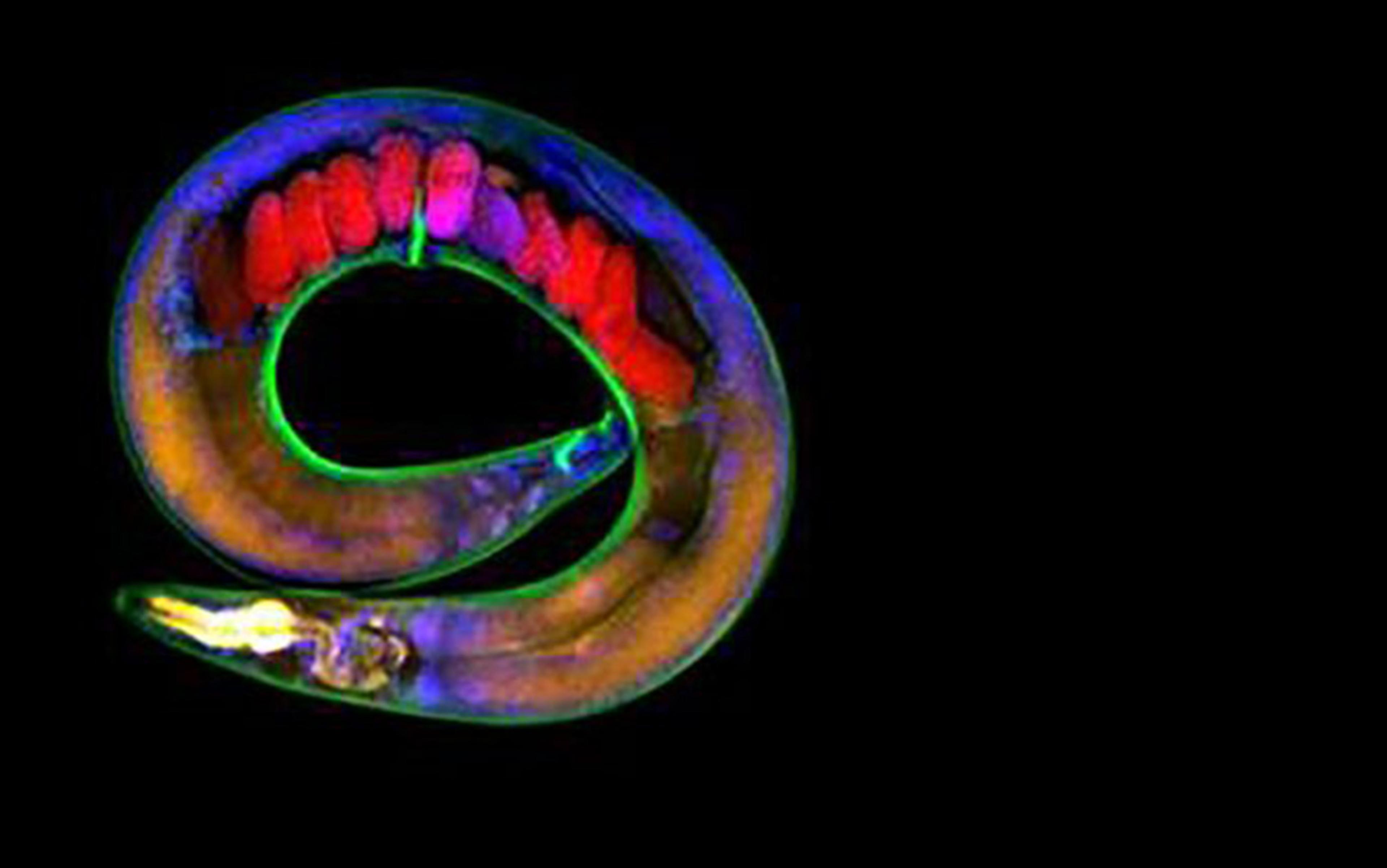There are times when a dilemma that seems like agony in adolescence can not only provide the basis for a prestigious career, but also lead to a profound shift in the world of ideas. Thus it is that the predicament faced by the 17-year-old Gregory Bateson, following his brother’s suicide in 1922, turns out to be extremely relevant to us today, for it eventually led him to revolutionise the study of anthropology, bring communication theory to psychoanalysis (thus undermining the Freudian model), invent the concept of the ‘double bind’, and make one of the first coherent, scientifically and philosophically argued pleas for a holistic approach to the world’s environmental crisis. Seeking to condense Bateson’s work into one core concept, one can say that, above all, he proposed a paradigm shift in the way we think of ourselves as purposeful, decisionmaking actors in the world.
Born in 1904, Gregory was named after Gregor Mendel, the monk and botanist who opened the way to an understanding of how hereditary traits are passed on from one generation to the next. Gregory’s father, William Bateson, had championed Mendel’s theories in England, involving himself in years of violent polemics as to the nature of the evolutionary process, and coining the word ‘genetics’ in the process.
So this was a family of scientists. William’s wife Beatrice worked with him on his research, and his father had been an academic. Gregory’s eldest brother John was studying biology at the University of Cambridge when he was conscripted to fight in the First World War, and killed in 1918. His other brother Martin also went to Cambridge to study zoology. Gregory, some five years younger, was expected to do the same, like his namesake; high achievement, in the Bateson family, was the only justification for living.
Yet his father insisted that the greatest achievement of all was art. Art was sublime, science a poor second. His father collected art, in particular the work of the visionary William Blake, whose original watercolour Satan Exulting Over Eve (1795) hung on the wall in the sitting room. And he associated the special genius of the artist with the idea of the genetic leap, the kind of evolutionary change that can take the race to a higher level of development. It’s just that he did not believe his family could aim so high.
Given these conflicting messages – you must achieve, but you are not capable of the highest achievement – it was probably inevitable that one of the three sons would seek to be an artist. Belligerent and exhibitionist like his father, furious too with the British establishment that had supported the war that killed his brother, Martin gave up science for poetry and the theatre. His father opposed him. The two argued and fought. Eventually, infatuated with a young woman who did not return his affection, Martin chose his dead brother’s birthday to go to the statue of Eros in Piccadilly Circus and shoot himself in the head. He was 22.
Gregory, hitherto considered the dummy of the family, now found himself saddled with all his parents’ considerable expectations. The very day after Martin’s suicide, his father wrote to the boy in boarding school to remind him that only ‘great work’ makes life worthwhile, but, once again, that ‘art is scarcely in the reach of people like ourselves’. Martin’s death proved this. ‘Fix your mind on some impersonal definite interest,’ his mother told him in a separate letter.
Gregory was about to go to university: Cambridge, of course. ‘I was left holding a sort of bag,’ he later reflected, ‘protecting these people as if they were made of glass.’ His parents insisted he study zoology; they seemed frightened of anything wayward, psychological, unstable. Yet for Bateson the only worthy object of study appeared to be human behaviour, the kind of complex circumstances – the war, British academia, his family background – that had created the drama he was living through. What he would eventually do was to use the tools of observation and analysis that his father taught him, the zoologist’s attention to patterning and morphology, to bring a fresh approach to the study of behaviour in groups, and above all how individuals communicate and relate in groups. Rereading his two great works, Naven (1936) and Steps to an Ecology of Mind (1972), it is evident that his influence in various fields has been enormous; also, that the message he eventually formulated through the 1960s and ’70s remains as urgent as ever.
Or rather messages. Having grown up in a world where one was told all too clearly what to do, Bateson scrupulously avoided offering firm directives. A summary of the conclusions he reached at the end of his career might run like this: both society and the environment are profoundly sick, skewed and ravaged by the Western obsession with control and power, a mindset made all the more destructive by advances in technology. However, any attempt to put things right with more intervention and more technology can only be another manifestation of the same wrongheadedness.
This might seem a recipe for defeatism and immobility. But Bateson was nothing if not subtle. Conflicting imperatives, paradoxes and no-win situations, he insisted, might well drive us mad, but they also spawn creativity, and even art. Faced with an impossible choice – a ‘koan’ as Zen Buddhists call it – you will be forced to revolutionise the way you think in order to move on. Rather than suggest technical solutions to the world’s problems, Bateson hoped that he might inspire us to start thinking about changing ourselves. For, ‘the major problems in the world,’ he wrote ‘are the result of the difference between how nature works and the way people think.’
Bateson’s own process of self-transformation began with a letter to his father in 1925. A year earlier, his parents had persuaded him to break off his engagement to a Swiss woman. She wasn’t English, she wasn’t a scientist, hence she wasn’t right. Sent off, in compensation, to the Galápagos Islands to repeat the fieldwork that Charles Darwin had done a century before, Bateson found the inhabitants far more interesting than the fauna. Pleading with his father not to be ‘terribly disappointed’, he wrote to tell him he needed to ‘break with ordinary impersonal science’. He would study people, anthropology.
Ten years later, on the opening page of Naven, he observed that, while the artist might capture the whole emotional tone or ethos of a society in a few pages, anthropologists restricted themselves to the mechanics of its organisation. But he would seek to link organisation and ethos. As a scientist, he would invade the territory of art; or do science the way an artist might. Thus Bateson, responding to the conflicting attitudes of his parents, found himself at the beginning of the movement that questioned the limitations of a traditional scientific approach, in particular the notion that the scientific observer is entirely separate from the objects of his or her study. But such thinking was ingrained in Western civilisation. ‘There are times,’ he wryly remarked ‘when I catch myself believing there is something which is separate from something else.’
Naven takes its title from a series of bizarre rituals performed by the Iatmul people of New Guinea, which bewildered Bateson for some years. He had gone to the South Pacific in 1927 intent on exploring the relationship between individuality and culture, eager to undermine the dominant British anthropological model of the time, formulated by Alfred Radcliffe-Brown, that saw human societies very much as biological organisms, with the behaviour of the individual parts entirely explicable in terms of the needs of the whole. Bateson found this rigid determinism oppressive and unconvincing, in part because it didn’t explain conflict between individuals, and again because it ignored the realm of aesthetics.
The opposing behaviour patterns encouraged escalating competition between the men and women
However, once among the tribes of the area, he had no idea what to observe or how to proceed. Other anthropologists had developed elaborate questionnaires and aggressive methods of interrogation, but Bateson had a horror of all interference in other people’s lives, and believed that questionnaires implied that one already knew what the important questions were. In 1929, he settled on the Sepik River, alone, with the Iatmul, a people who had only recently abandoned cannibalism and continued to attribute everything that went wrong to ‘a lack of homicide’, moulding their whole culture on ‘a continual emphasis upon the spectacular’. Bateson soon realised that the bellicose atmosphere in the tribe was altering his own personality. He had grown ‘rougher in his methods’. All the same, it was not until 1932 that he finally made his breakthrough.
Bateson had been observing the radically different behaviour of Iatmul men and women. The more the men were exhibitionist and boastful, the more the women became quiet and contemplative watching them. He realised that the opposing behaviour patterns stimulated, or provided the context for, each other, encouraging a dynamic of escalating competition between the men, to impress the women, and a growing differentiation between men and women as the latter sank into an admiring passivity that sometimes bordered on the catatonic.
The potentially unstable nature of this process, which he referred to as schismogenesis – an interaction that generates difference between individuals – then allowed him to attribute a function to the strange Naven rituals, which involved women dressing in men’s clothes and excitedly, if briefly, adopting traditional male behaviour, while men dressed in women’s clothes and presented themselves as abject and passive, even submitting to simulated anal rape.
Bateson hypothesised that Iatmul society acted as a self-correcting system. The individual was free to assume a particular position within the group ethos and inject novelty into it, but any behaviour that seriously threatened the continuation of the whole – as when someone broke a taboo, or repeatedly failed to observe the rules governing sexual behaviour – would be countered by traditional rituals and reactions.
More provocatively, he reasoned that the kind of tasks that the society required of individuals conditioned their cognitive skills. Iatmul men could remember prodigious numbers of ancestral names and the myths attached to them; such knowledge guaranteed possession of totemic powers, a possession challenged by rival clans claiming superior knowledge. To speak the myths out loud, however, was to dissipate their power, hence, in competitive debate between the clans over possession of the names, opponents were challenged over specific details of the myths but without the broader stories being brought to light. It was a situation, Bateson observed, quite alien to the ‘rote remembering’ used in the West, and requiring extraordinary powers of recall. It is not what we learn, he went on to reflect, that makes us who we are, but the manner in which we have learned to learn. This explained why one might imagine that people from other cultures were less intelligent: it was a question of our cultures training us to develop different kinds of intelligence.
In December 1932, the anthropologists Margaret Mead and her husband Reo Fortune came across Bateson in the Iatmul village of Kankanamun, and the three worked together for some months. It was a meeting of two different approaches to anthropology. Mead had studied under Franz Boas in New York, who saw society not as an organic mechanism, but a collective-patterned psychology developing historically. This encouraged a purposefully political use of anthropological research, and in fact Mead was already famous for using her studies to promote liberated views of sexuality and women’s role in society. Later she would be accused of using aggressive research tactics to find what she wanted to find, regardless of the real situation.
In any event, she and the more cautious Bateson complemented each other, and the three began to use his theories not only to understand the Iatmul but as a way of knowing themselves and how each fitted into their own group. ‘We … saw the world with eyes that seemed freshly opened to every slightest act and gesture,’ wrote Mead; ‘our friends all seemed to have become more intelligible to us.’
But Fortune was not so impressed, feeling that the behavioural schemes Bateson was elaborating – the basis for what is now called Positioning Theory – were being used to isolate him; in fact, the trio’s period together ended with Mead leaving Fortune and marrying Bateson in Singapore in 1936. To his now widowed mother, Bateson explained that it was a marriage of convenience, since he and Mead would be carrying out fieldwork in a remote village in Bali; science was still the priority. When Mead arrived for the wedding with new silk underwear, Bateson used it to wrap his camera lenses.
In fact, the novelty of the Bali project was photography. For the first time, an ethnographic study would be carried out mainly through film. Again, it was a way of establishing the principle of interconnectedness. Writing in the introduction to Balinese Character: A Photographic Analysis (1942), Bateson and Mead explain that:
[W]e are attempting a new method of stating the intangible relationships among different types of culturally standardised behaviour by placing side by side mutually relevant photographs. Pieces of behaviour, spatially and contextually separated – a trance dancer being carried in a procession, a man looking up at an airplane, a servant greeting his master in a play, the painting of a dream – may all be relevant to a single discussion; the same emotional thread may run through them.
Both this and Naven are extraordinary books for their constant back-and-forth from a concrete particular to a generalised abstract; aspects of behaviour are carefully observed, then a general theory extrapolated, but immediately Bateson returns to the concrete to admit that there is still much that hasn’t been explained. All his writing would be characterised by this oscillation between the kind of grand ambition that his father would have applauded and a disarming self-deprecation. Awareness that the larger picture remained elusive then served as a caveat against any ‘corrective’ intervention based on his work.
An arms race leading to a war was schismogenesis on a grand scale, with no correcting feedback
Always obsessed by the same questions, above all the way that the natural world seemed to be held together and mutually balanced by patterning – so that the veins on a leaf could usefully be compared to the scales of a fish, or the orbits of the planets, or a tribal dance – Bateson never repeated himself. He felt that coming at his central concern from different angles would make for a deeper understanding, a greater focus on principles, rather than superficial phenomena. As a result, he would be considered a forerunner of the late-20th-century move toward interdisciplinary studies and holism. Breaking up with Mead in 1948, because he found her too controlling and invasive, too purposeful, he threw himself into information theory, cybernetics and, crucially, psychotherapy.
The war had prompted scientists to consider how mechanisms – anti-aircraft missile systems, for example – might self-correct, constantly using feedback to adjust their activity to a desired outcome. Bateson seized on this ‘cybernetic’ model to flesh out his own intuitions as to the functioning and malfunctioning of societies, families and individuals. An arms race leading to a war, for example, was schismogenesis running out of control on a grand scale, with no correcting feedback. Similarly, a young man shooting himself in Piccadilly over family quarrels and unrequited love could be seen as a case of failed self-adjustment. It was an approach that set aside historical explanations, or a Freudian focus on childhood trauma, to consider all experience as systemic interaction, albeit at different levels.
But if societies and individuals were indeed self-correcting systems, why would the appropriate feedback fail to get through? How could disaster happen? Considering recent studies on the distinction between digital and analogical information, Bateson decided that in human terms this might be compared with language on the one hand, where words have no real relation to the things they refer to, and physical gesture or tone of voice on the other, which has a different kind of reality. What would happen if the context that the body creates around a linguistic communication were out of synch with the words, if someone said one thing, but appeared to mean another?
In 1953, Bateson accepted a research grant to set up a project that would eventually be based in the Palo Alto Medical Research Foundation in California. For 10 years, he immersed himself in the harsh realities of psychiatric medicine, leading a team of researchers looking for a new model for treating mental illness, something that might offer an alternative to the Freudian approach, which often led to long and inconclusive periods of psychoanalysis hardly sustainable for many sufferers. If, Bateson’s sponsors reasoned, psychiatric symptoms could be attributed to a malfunctioning system of communication – the way that families talk to each other – perhaps quite simple interventions could have therapeutic effects. It was the beginning of the move to cognitive behavioural psychotherapy, and an indication that Bateson was still thinking in terms of the destructive aspects of his own family. Faithful to that family’s traditions, he had once again married into the job, this time with his secretary, Betty Sumner.
Bateson worked with schizophrenics who frequently fail to appreciate the context in which a message is to be understood. A routine question from a waitress – ‘How can I help you?’ – might be understood as a sexual proposition. Or to be told that a dish on the menu is not available might be contextualised as part of an elaborate international conspiracy. Rather than looking for the cause of this disturbance in the traumatised psyche or in an organic dysfunction of the brain, Bateson suggested that the schizophrenic has ‘learned’ to ‘live in a universe where the sequences of events are such that his unconventional communication habits will be in some sense appropriate’. His ‘disorder’, that is, is part of a larger system. Indeed, Bateson now began to think that the illness might itself be the way that the large social system self-corrects; the family can continue as it is because one child is ill. The ‘system’ at the individual level is sacrificed to maintain the system at the family or society level.
But what were these ‘sequences of events’ and the system they implied? Bateson imagines a child who from birth receives contradictory messages from the figure most involved in his care. In ‘Toward a Theory of Schizophrenia’ (1956), he offers an account of a young man recovering from an acute schizophrenic episode visited in the hospital by his mother:
He was glad to see her and impulsively put his arm around her shoulders, whereupon she stiffened. He withdrew his arm and she asked: ‘Don’t you love me any more?’ he then blushed, and she said: ‘Dear, you must not be so easily embarrassed and afraid of your feelings.’ The patient was able to stay with her only a few minutes more, and following her departure he assaulted an aide …
The example is followed by a two-page analysis in which Bateson observes how the mother rejects affection, demands affection, then criticises her son for an inhibition she herself has encouraged. Ultimately, Bateson suggests, the patient is up against the dilemma: ‘If I am to keep my tie to mother, I must not show her that I love her, but if I do not show her that I love her, then I will lose her.’
All members of the family, patient included, played an equal part in the communication system that led to illness
To grow up within such a dilemma, or ‘double bind’ as Bateson dubbed it, would very likely induce a structural trauma, as if the mind were constantly put before conundrums of the variety ‘All statements on this page are false.’ Eventually, the child would begin to behave accordingly, dissociating verbal and nonverbal communication, literal and metaphorical levels. This explained why conversation with a schizophrenic is characterised by a series of nonsequiturs such that the ‘normal’ party to the dialogue often suspects that he or she is being made fun of.
Bateson’s theory of the double bind was initially greeted as a major breakthrough, encouraging his colleagues to extend their therapy to entire families in an attempt to change the patterns of communication between them, thus freeing the schizophrenic from his ‘appropriate’ response. People became extremely excited that a solution to this most enigmatic of mental illnesses might be at hand. It was the beginning of family therapy as we know it today. However, the approach also prompted the opposition of those who felt that the model unjustly blamed the parents, or the mother, for the schizophrenic’s condition, while in fact the illness, they claimed, was down to a physical disorder of the brain.
Typically, Bateson dissociated himself from both the enthusiasts and the detractors. To impose a ‘solution’ on the family from outside as an exercise of power could only lead to harm, he told his colleagues; his own approach was simply to establish a more healthy kind of communication with a patient, perhaps playing golf together. But those who accused him of a blame game were similarly naive, he thought. They assumed that a parent held a one-way power over a child; rather, all members of the family, patient included, played an equal part in the system of communication that led to the illness. To one accusation that he was not taking the organic aspect of the disease seriously, Bateson replied:
I will concede that schizophrenia is as much a ‘disease’ of the ‘brain’ as it is a ‘disease’ of the ‘family’, if Dr Stevens will concede that humour and religion, art and poetry are likewise diseases of the brain or of the family or both.
This was always his style, to force the debate toward the larger picture, making any hasty intervention appear grotesque. In the lecture ‘Form, Substance and Difference’ (1970), he suggests that behind this debate lies a key error in the Western mindset:
If you put God outside and set him vis-à-vis his creation, and if you have the idea that you are created in his image, you will logically and naturally see yourself as outside and against the things around you.
So all relationships, including the scientist’s with the object of his study, became power relationships. Earlier beliefs in multiple interacting deities immanent in the natural world were, Bateson thought, much closer to our experience of the real world.
With Betty and their son John, Bateson lived in a house full of animals: alligators, armadillos, snakes, spiders. Betty eventually left him because Bateson was ‘overprotective’ of her. Dismayed by the growing controversy surrounding the double bind and family therapy, Bateson shifted to studying communication in octopuses and eventually dolphins. Did such animals play? If so, how could one octopus contextualise a message so that another knew that a certain gesture was meant in play and not for real? In 1961, yet again, he married someone to help him with his research. The psychiatric social worker Lois Cammack had assisted Bateson in collecting octopuses and keeping them in his house. She later observed that, in line with the ethos he had inherited from his family, Bateson saw all time away from work as wasted; he remained an obsessive achiever.
Through the 1970s and ’80s, in an extraordinarily creative series of conferences, papers and essays collected in Steps to an Ecology of Mind, Bateson urged people to re-examine their own way of learning and thinking. Reflecting on a painting from Bali, for example, he suggests that the nature of art, in particular its characteristic ambiguity and abundance of possible meaning, is to draw us to a state of contemplation, rather than action; the world is made to appear too complex to understand or control, hence art offers a ‘self-correcting’ function in a society bent on intervention.
But perhaps the most characteristic of his later essays is ‘The Cybernetics of Self: A Theory of Alcoholism’ (1971). Why, Bateson asked, were some alcoholics ‘cured’ by Alcoholics Anonymous (AA) with its injunction to the sufferer to recognise that he or she was ‘powerless’ in the face of alcohol?
Bateson begins his answer by observing that in many countries drinking alcohol occurs in a competitive spirit, a symmetrical schismogenesis if you will, as drinkers try to outdo each other, each prizing the ability to take his drink. Staying sober is thus understood as an expression of power over self and the world, an approach that implies a Cartesian dualism of mind and matter: my willpower versus the bottle.
Every time that the alcoholic gets drunk, family and friends invite him to show more self-control. He stops drinking for a while, but this leads to a loss of pride – he’s someone who can’t take his drink – so at a certain point he seeks to demonstrate his control and recover his pride by drinking just a little. The return to drink then is an attempt to correct an implicit aspect of the sober state – his weakness – that the alcoholic, given the general social ethos, finds unacceptable.
The alcoholic arrives at a crisis situation where to live in the sober state is miserable, while to drink is suicidal
However, the immediate effect of the alcohol, inviting the drinker to abandon self-control and go with the flow, actually corrects the dangerous notion that one is separate and opposed to the world. Initially then, this is therapeutic; the drinker immediately feels more integrated and relaxed, a better person even. Except, of course, that he then goes on to drink too much, which leads to further humiliation and further injunctions to show self-control.
Oscillating between wild bingeing and rigid sobriety, the alcoholic eventually arrives at a crisis situation where to live in the sober state is utterly miserable, while to drink is suicidal. We have our double bind, or koan. At this point of complete impasse and desperation, the AA’s precepts offer a solution, a chance of moving on, via a complete revision of the alcoholic’s mindset. He accepts he has no control, and no power. He even abandons his name, and hence personal pride, in the anonymity of the group, and makes it his first priority to help others in his predicament. This move at last makes the sober state acceptable, and the idea of ‘challenging’ the bottle unthinkable. Rather than changing the world, he learns to adapt himself.
The closing words of Bateson’s paper suggest that, apart from the question of alcoholism, his essay is a more general invitation to change:
If we continue to operate in terms of a Cartesian dualism of mind versus matter, we shall probably also continue to see the world in terms of God versus man; elite versus people; chosen race versus others; nation versus nation; and man versus environment. It is doubtful whether a species having both an advanced technology and this strange way of looking at its world can endure.
In an interview with his biographer David Lipset in 1972, Bateson was even more blunt. The most one could do for the world ‘was scientific work which might reconcile Occidentals to death’, the ultimate surrender of control. It was an attitude that drew him toward Buddhism in his later years, and made him immensely popular among alternative groups of all kinds. Yet Bateson was suspicious of popularity, and always insisted on a rigorous scientific approach, however elusive the questions under discussion.
In 1975, the psychologist R D Laing, an admirer of Bateson, was surprised that, despite his skepticism, age and evident weariness, he nevertheless continued to travel to conferences the world over. One evening at dinner, Laing recalls:
We started talking about Freud’s Totem and Taboo, about eating the father. I suddenly realised that he was wanting to be eaten, that he wanted everything he had, all the juices … to be incorporated in his sons, in his spiritual sons, in his scientific sons. I thought he was doing the rounds almost, to make sure that everyone had a last chance to suck the last thought.
Being eaten: the ultimate ‘ecological gesture’. Fortunately, for those of us who couldn’t join the feast before his death in 1980, Bateson’s books remain as nutritious as ever.
